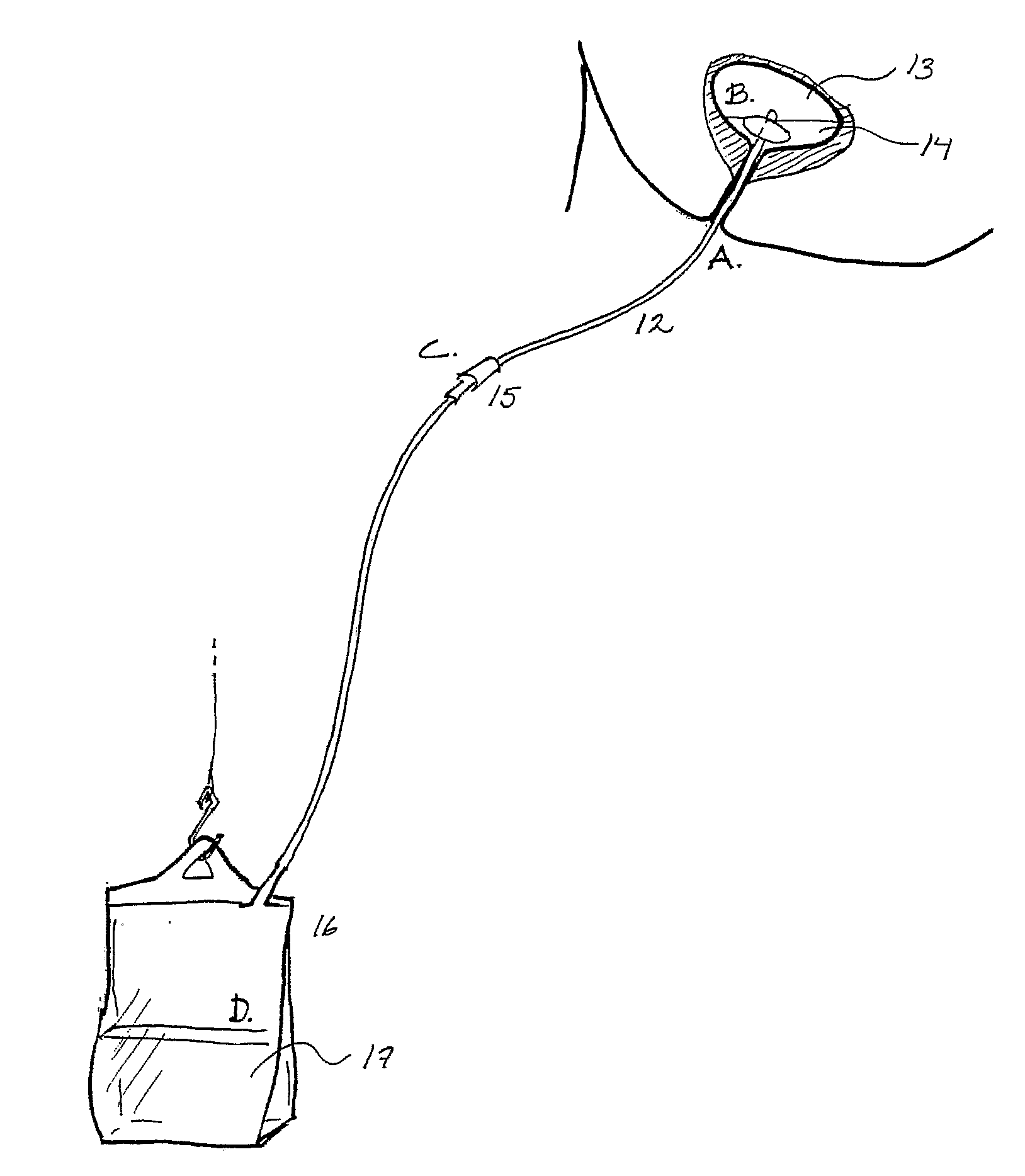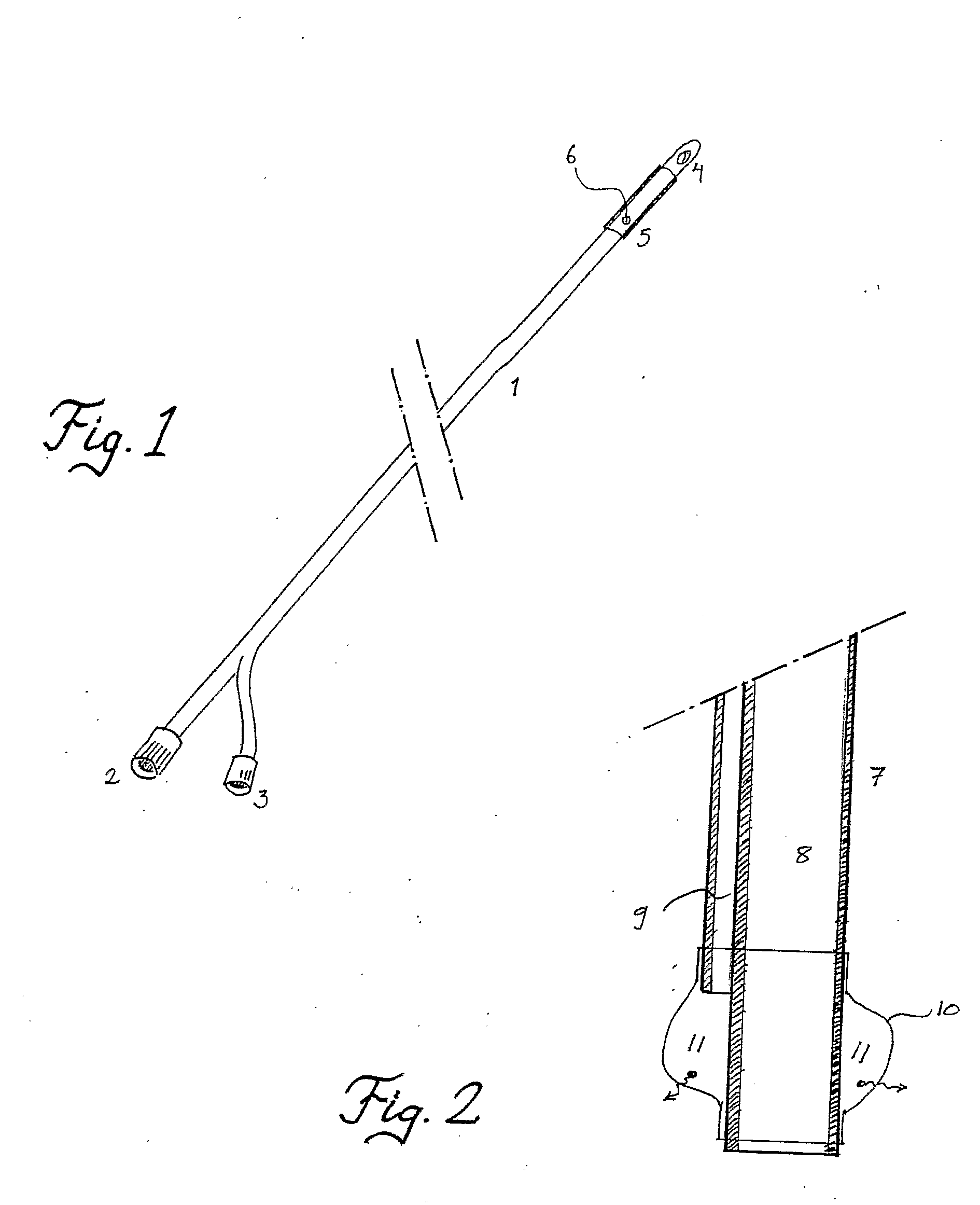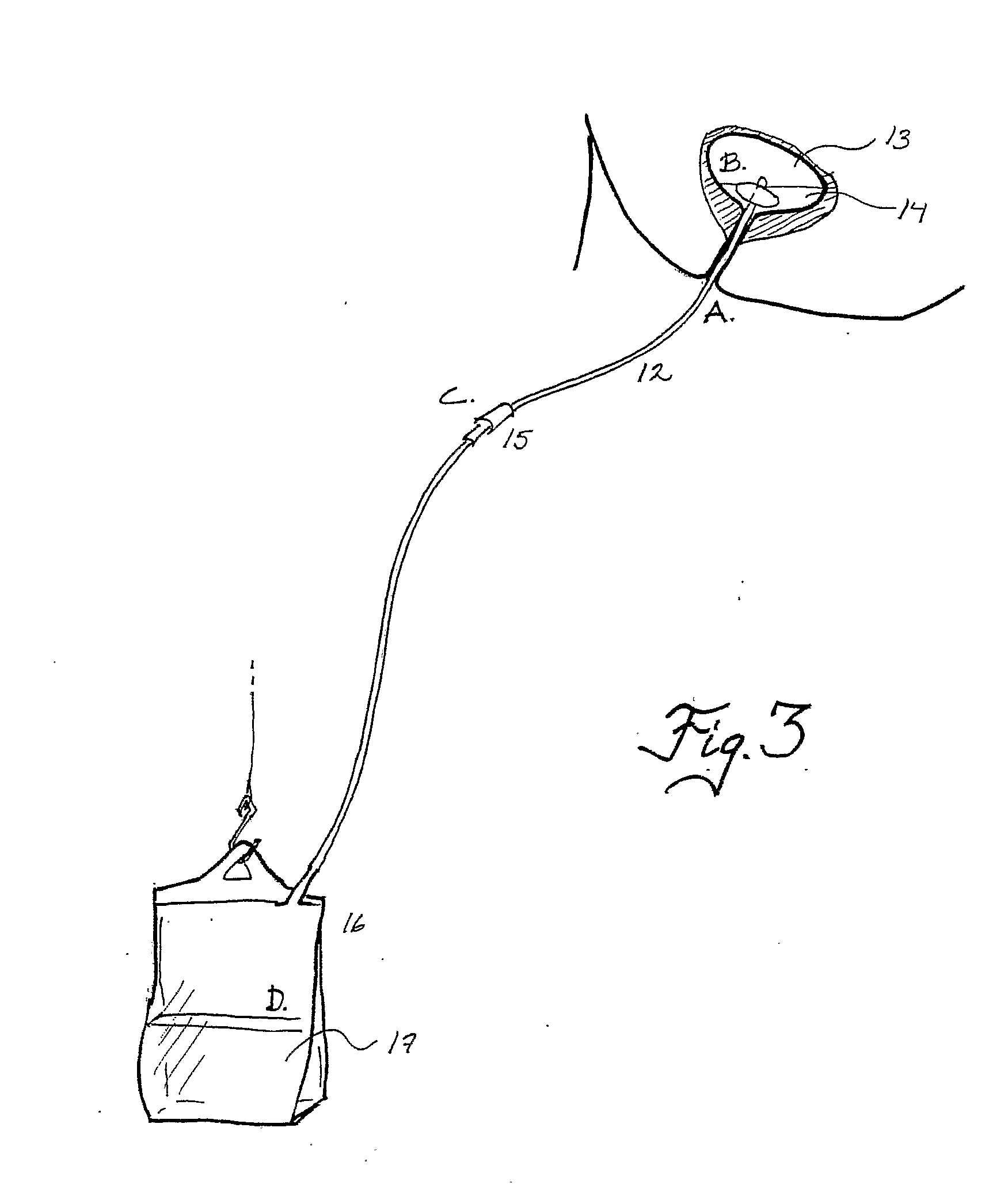Device and Method for Administering Therapeutic Agents
a technology of therapeutic agents and devices, applied in the field of devices and methods for administering therapeutic agents, can solve the problems of not being able to achieve satisfactory results of these methods, not being able to prevent cauti with the cuff, and not being able to achieve the above mentioned methods, so as to achieve easy control of time, place and concentration, and low systemic toxicity. , the effect of simple and safe solution
- Summary
- Abstract
- Description
- Claims
- Application Information
AI Technical Summary
Benefits of technology
Problems solved by technology
Method used
Image
Examples
example 1
Incubation of an E. coli Strain in a Solution of Ascorbate and Sodium Nitrate
1.1 Materials & Methods
[0107] An E. coli strain isolated from urine of a patient with lower urinary tract infection was used. A 50 ml glass bottle with a narrow neck (FIG. 4) was filled with fresh urine (pH 6.5) from a healthy volunteer. The urine was inoculated with the E. coli strain to a final density of 105 colony forming units / ml. Then an all-silicone urinary catheter was inserted in the bottle and the cuff was filled with a solution comprising: [0108] 1. Saline+ascorbate (20 mM)+HCl to a final pH of 2.0 (control; n=3) or [0109] 2. Saline+ascorbate (20 mM)+HCl+sodium nitrite (2 mM), pH 2 (nitrite; n=3)
[0110] The expanded cuff was fixed at the neck of the bottle to prevent leakage of urine when the bottle was turned up side down. The glass bottle was then incubated in 37° C. for 10 h after which growth of E. coli in the surrounding urine was monitored by optical density (OD) at 540 nm on a Spectrama...
example 2
Viable Counts
2.1 Materials & Methods
[0113] An E. coli isolated from a patient with urinary tract infection and a reference strain, E. coli ATCC 25992 were used in this study. An overnight culture was added to 25 ml of urine to a final density of 105 CFU / ml. The urine was placed in long-necked 50 ml flasks with a shape resembling the urinary bladder and the urethra. An all-silicone catheter (Argyle, Sherwood Medical, Tullamore, Ireland) was placed in the flask and the retention balloon was filled with 10 ml of saline containing ascorbic acid (10 mM) and sodium nitrite (5 mM). The pH of the solution was adjusted to 2.5 using hydrochloric acid (3 M). Ascorbic acid and nitrite were prepared and mixed immediately before administration. Ascorbic acid solution alone (pH 2.5) was used as control. After filling the retention balloons the catheter was gently pulled outwards and fixed at the neck whereby the flask opening was sealed off. Then the flasks were turned up side down and incubate...
example 3
3.1 Materials & Methods
[0117] The kinetics of NO release from the retention balloon was monitored in separate experiments. The catheter was placed in the flask and after filling the retention balloon with the ascorbic acid / nitrite solution the flask was closed. Synthetic NO-free air was flushed via an inlet at a rate of 4.5 L / min and headspace NO was continuously measured from an outlet by a rapid-response chemiluminescence system (Aerocrine AB, Stockholm, Sweden).
3.2 Results
[0118] The NO release rate from the balloons peaked initially and then decreased with a half-time of about 30 min, see FIG. 8. The results prove the concept underlying the invention and show the utility of the device and method for the treatment of urinary tract infections.
PUM
 Login to View More
Login to View More Abstract
Description
Claims
Application Information
 Login to View More
Login to View More - R&D
- Intellectual Property
- Life Sciences
- Materials
- Tech Scout
- Unparalleled Data Quality
- Higher Quality Content
- 60% Fewer Hallucinations
Browse by: Latest US Patents, China's latest patents, Technical Efficacy Thesaurus, Application Domain, Technology Topic, Popular Technical Reports.
© 2025 PatSnap. All rights reserved.Legal|Privacy policy|Modern Slavery Act Transparency Statement|Sitemap|About US| Contact US: help@patsnap.com



